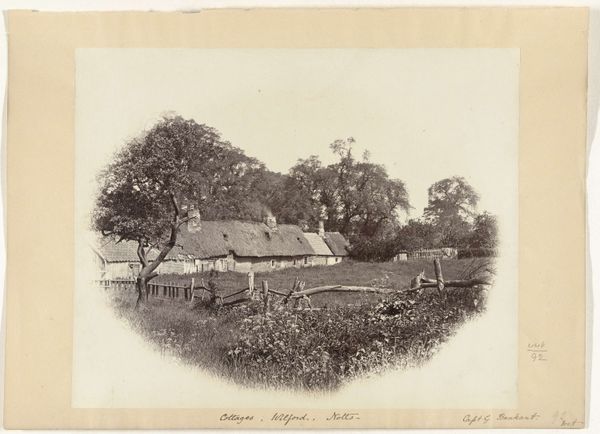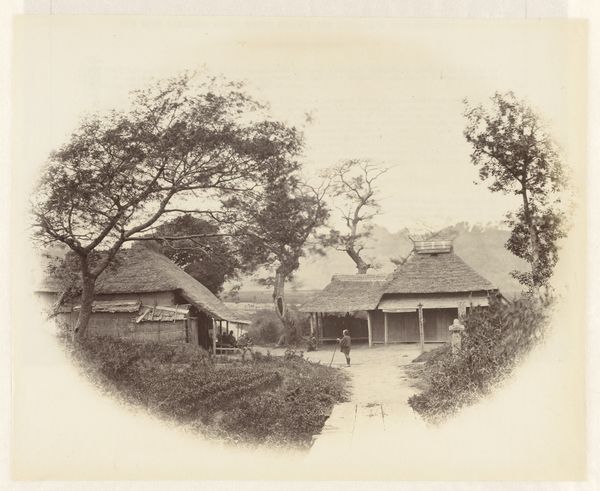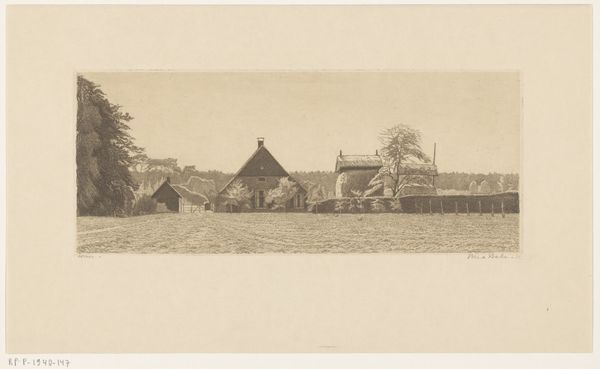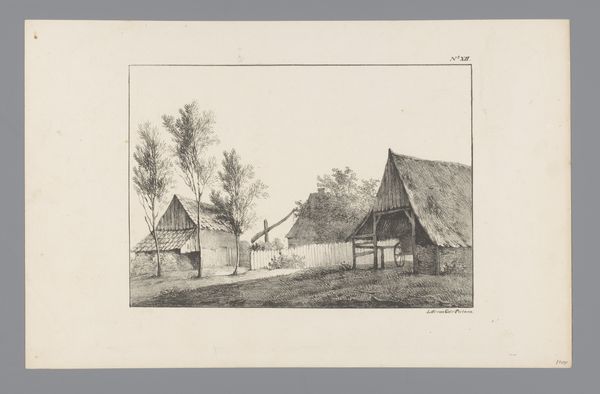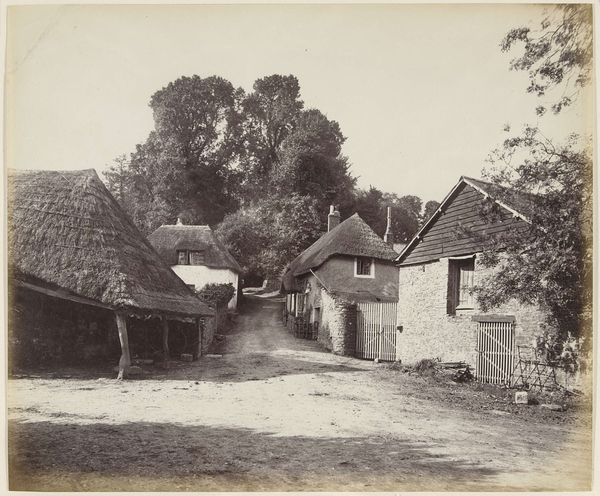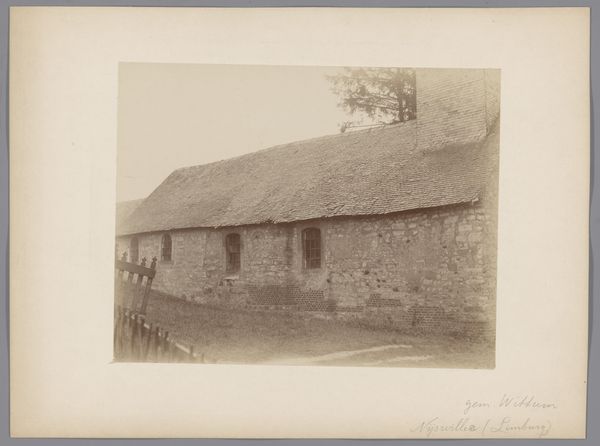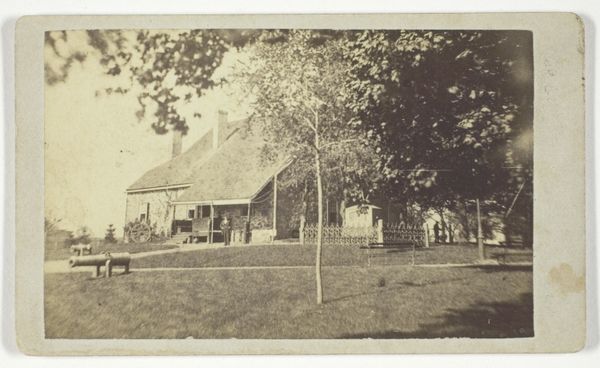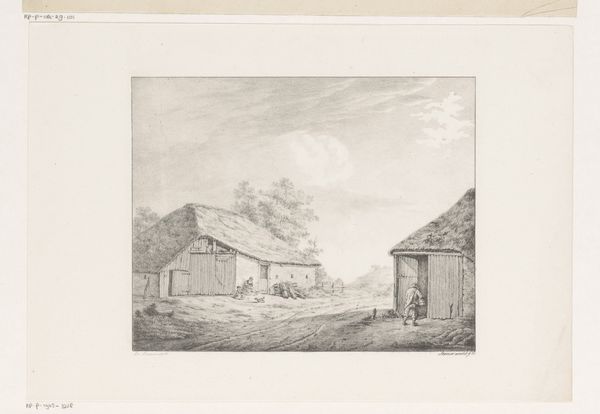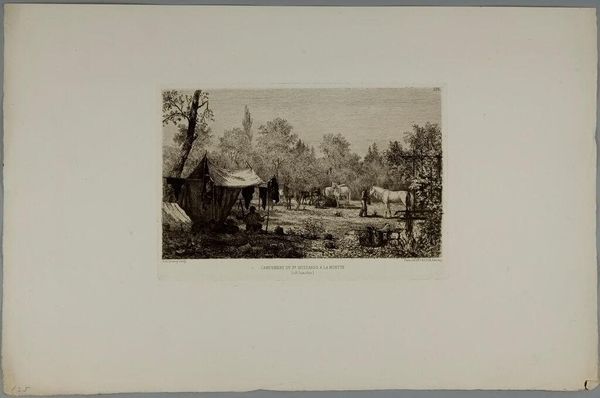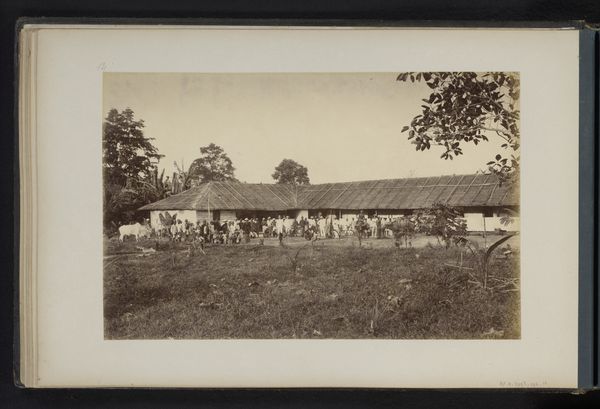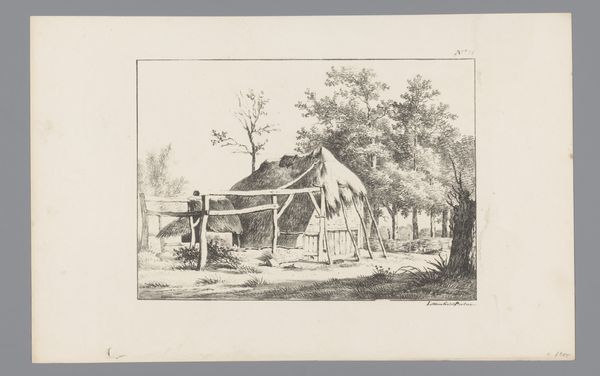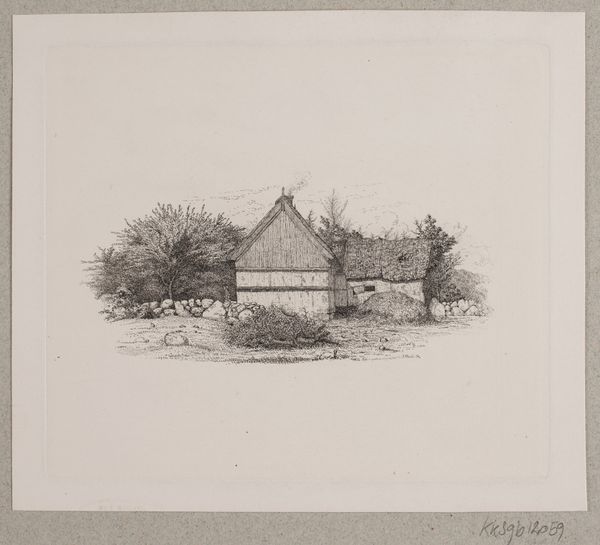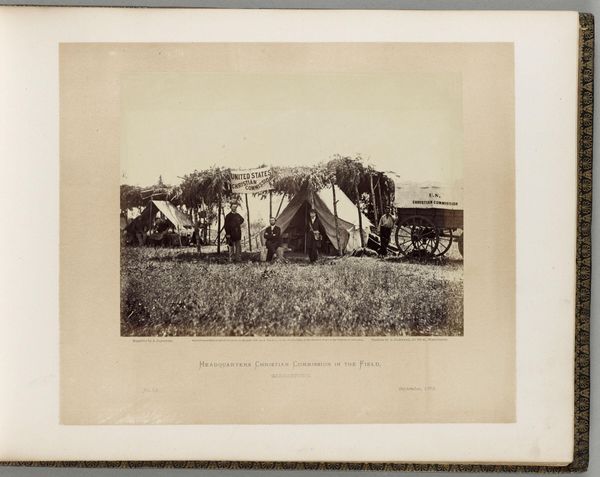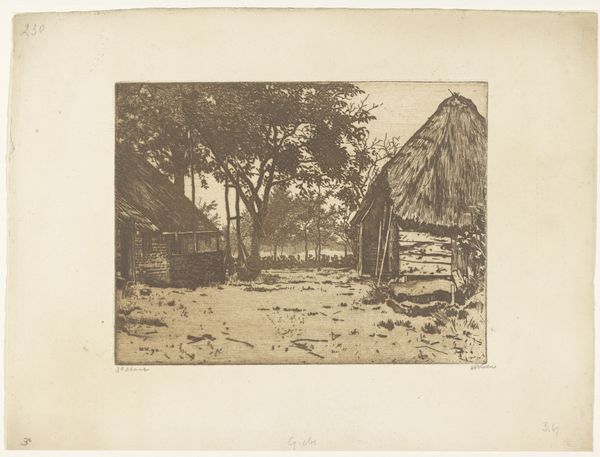
print, daguerreotype, photography
# print
#
landscape
#
daguerreotype
#
photography
Dimensions: height 200 mm, width 252 mm, height 271 mm, width 378 mm
Copyright: Rijks Museum: Open Domain
Curator: I am drawn to the quiet stillness evoked in this landscape by George Bankart titled "Huizen in Wilford, Nottinghamshire", which we estimate dates from 1855 to 1890. There is an intriguing balance of open space and detailed texture here. Editor: It has a melancholic feeling to it, doesn’t it? The thatched roofs and picket fences, almost a cliché of rural England, and the grey-scale tones amplify the mood. Curator: Indeed. Thatched roofs carry a symbolic weight—they’re a deeply traditional building material, embodying notions of home, security, and connection to the land, but they also hint at class structures within English history. It’s interesting to reflect on what kind of labour it took to build them, especially during that period. Editor: Precisely. Looking at those cottages in line, it is easy to fall into nostalgic sentimentalism, forgetting that such imagery, when widely circulated, was also strategically deployed in constructing a specific vision of English national identity—an identity often idealized and whitewashed. It almost reads like visual propaganda, reinforcing ideas about quaint rural life. Curator: You are making an important point. I think Bankart captures a tension within England. The photograph preserves a version of vernacular architecture that even then must have been disappearing, while also representing the romantic allure of rural spaces. Editor: Right. We tend to gloss over how quickly industrialisation transformed these communities and working-class lives. Early photographs like this were often instruments of documentation but they inevitably shaped and stylized subjects for viewers who often lived very different experiences. What do you think is implied through those large trees looming overhead? Curator: The trees add another layer of meaning. In symbolic terms, they could signify growth and endurance. There could be suggestions that these deep roots give the houses context by relating them to the history of a place. Editor: This image shows that nostalgia can be a political instrument. In today's society, which is defined by globalisation and ecological catastrophe, we need more radical reinterpretations. Thank you for making me reconsider my preconceptions regarding familiar symbolism and imagery. Curator: Thank you! Your observation on the manipulation and creation of an aesthetic through nationalistic pride have pushed my thoughts further, and allowed me to ponder over a more layered visual history.
Comments
No comments
Be the first to comment and join the conversation on the ultimate creative platform.
